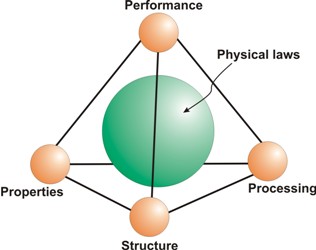Q. 1 The ___ which repelled by a magnet.
A. ferrites
B. diamagnetic
C. ferromagnetic
D. paramagnetic
Ans.: B
Q. 2 _______ are an examples of a diamagnetic material.
A. zinc, mercury
B. lead, Sulphur, copper
C. silver, bismuth, wood
D. all of the above
Ans.: D
Q. 3 Which of the following material have permeability slightly less than unity?
A. Ferromagnetic material
B. Diamagnetic
C. ferrites
D. paramagnetic materials
Ans.: B
Q. 4 ______ dipoles are absent in diamagnetic materials.
A. permanent magnetic
B. Electric
C. Both A and B
D. none of the above
Ans.: A
Q. 5 In _____ ,the two relatively weak magnetic fields are in opposite directions and cancel each other.
A. Ferromagnetic materials
B. Electrical materials
C. Electromagnetic materials
D. diamagnetic materials
Ans.: D
Q. 6 When an external magnetic field is applied, the permanent magnetic dipole orient themselves parallel to the applied magnetic field and give rise to a positive magnetization. This is true in which type of materials?
A. diamagnetic
B. paramagnetic
C. Insulating materials
D. none of the above
Ans.: B
Q. 7 Permeability is small but positive for materials_____.
A. Diamagnetic
B. Conducting
C. paramagnetic
D. ferromagnetic
Ans.: C
Q. 8 _____ materials which are strongly attracted by a magnet.
A. Ferromagnetic
B. electric
C. Electromagnetic
D. any of the above
Ans.: A
Q. 9 The permeability of ferromagnetic material is____.
A. very low
B. very high
C. slightly greater than 1
D. all of the above
Ans.: B
Q.10 Ferromagnetic material can be classified as:
A. soft magnetic materials
B. hard magnetic material
C. Both A and B
D. none of the above
Ans.: C
Q. 11 A _______materials which easily magnetized and _____ materials retaining their magnetism with great tenacity.
A. hard magnetic, soft magnetic
B. hard magnetic, hard magnetic
C. soft magnetic, soft magnetic
D. soft magnetic, hard magnetic
Ans.: D
Q. 12 The properties of soft magnetic materials are /are:
A. high relative permeability
B. low coercive force, have extremely small hysteresis
C. easily magnetized and demagnetized
D. all of the above
Ans.: D
Q. 13 Which of the following is/ are examples of soft ferromagnetic materials?
A. iron and its alloys
B. nickel, cobalt
C. tungsten, aluminium
D. All of the above
Ans.: D
Q. 14 Hard magnetic materials have_____.
A. relative low permeability
B. very high coercive force
C. difficult to magnetize and demagnetize
D. all of the above
Ans.: D
Q. 15 Due to ease of magnetization and demagnetization soft ferromagnetic materials are most suitable for_____.
A. electromagnetic, telephone receivers
B. electric motors, generators
C. transformers, inductors, relay
D. All of the above
Ans.: D

Hello, good article. I locate it totally helpful. I really desire to look extra posts in the later
I precisely wanted to appreciate you again. I’m not certain the things that I would have gone through without the entire basics discussed by you concerning this subject. It had become an absolute daunting issue in my view, but taking note of your expert strategy you managed the issue made me to cry with happiness. I am just happy for the work and in addition pray you are aware of a great job your are putting in educating people using your website. I am certain you haven’t met any of us.